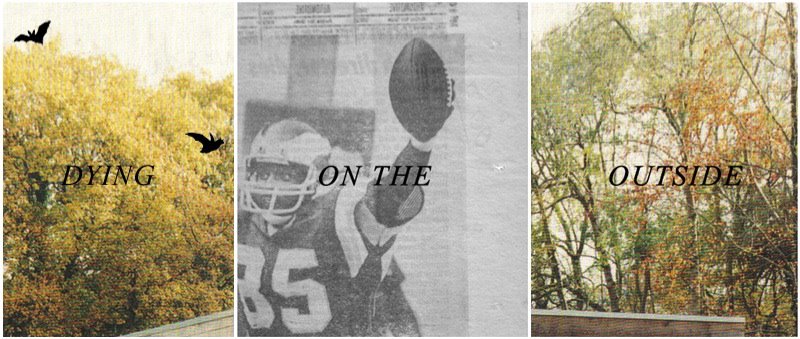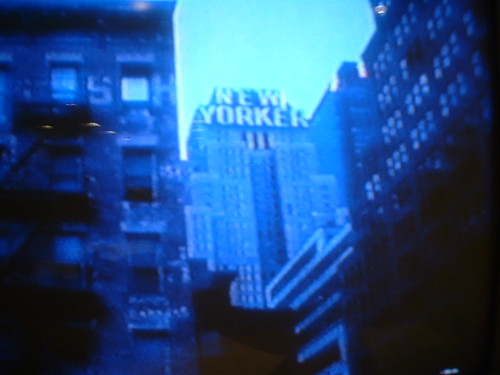--Susan Sontag

Few things so aptly demonstrate Sontag's description of photography as a default mode of seeing as this: Elizabeth Peyton, probably America's most successful contemporary figurative painter, is essentially a photographer. More completely even than the photorealists, whose paintings were, to my eyes, much cleaner and glossier, much more brittle and less dynamic than most actual photography (or, for that matter, any kind of credible "realism"), Peyton's work has absorbed photography's aesthetic and perceptual standards. Almost without exception, her paintings draw heavily on particular genres of photography (and even on particular photographs by Stieglitz, Cartier-Bresson and others--a portrait of Sontag herself is among them): candid portraiture, photojournalism, film stills, street scenes, and, especially, celebrity and fashion photography.
Unlike the photorealists, Peyton isn't trying to trick the eye; with their thick brushstrokes and the sketched quality of the figures, her pictures are obviously made with paint and applied by a human hand. But these not purely mimetic painterly techniques actually contribute to the paintings' photographic quality. They possess the same flat but richly textured surface, the same distortions of proportion, the same privileging of the foreground and attenuation of perspective, and the same ambient, suffusive light--the same distinct qualities, in other words, that we have come to take for granted in photography's representation of reality.
And it's not just the compositional technique that makes these pictures so familiar. Almost all of Peyton's paintings strive to capture Robert Frank's "in-between moments," those ostensibly unposed, heretofore ignored snippets of everyday life. Forgotten objects, furtive glances, moments on the verge of becoming; for Frank and aesthetic contemporaries like Garry Winogrand and Walker Evans, even such marginalia could be laden with meaning. As Sontag says, "cameras make vision expressive." This aptitude for discovering beauty and expressiveness in the mundane is a gift that mid-century art photography has given the advertising and fashion photographers of today, who have rigorously stylized such ostensibly naturalistic moments and brought them far beyond the boundary of cliche (as everyone knows, appearing unposed can be its own pose). Peyton's great achievement is that she's so convincingly captured this way of seeing, now so commonplace among us affluent, educated, media-saturated, millennial Westerners. She perceives "us" the way we perceive ourselves (or wish to).
An aesthetic appreciation of the world is a major component of this mode of perception; it is fitting then, that Peyton's pictures are often so gorgeous. The colors and textures--particularly the dense, rich red of a coat superimposed over a luminous, semi-abstract background in "Nick Reading Moby Dick" (2003), the deep scarlet backdrop of "Princess Kurt" (1995) and the cool blues of her dimly lit nighttime scenes--can be pretty ravishing. This stuff is deeply, startlingly attractive.
 Indeed, the sheer, seductive prettiness, of Peyton's work, in combination with its implicit claim to photographic realism, points to perhaps Sontag's deepest critique of photographic vision: the obscuring, distorting power of beauty. Sontag takes photography to task for its often inadvertent beautification of, in particular, ugly social realities--poverty or war, for example. This inescapably aesthetic relationship to objects, she argues, has the effect of creating "timeless" images; that is, images that remove objects from their political or historical contexts. Moreover, this aesthetic decontextualization grants photographic subjects their facility as objects of consumption. Stripped of their social and temporal specificity, they cease to be things in themselves and begin to exist only in relation to the viewer's interpreting, appreciating eye: "Even those photographs which speak so laceratingly of a specific historical moment also give us vicarious possession of their subjects under the aspect of a kind of eternity: the beautiful."
Indeed, the sheer, seductive prettiness, of Peyton's work, in combination with its implicit claim to photographic realism, points to perhaps Sontag's deepest critique of photographic vision: the obscuring, distorting power of beauty. Sontag takes photography to task for its often inadvertent beautification of, in particular, ugly social realities--poverty or war, for example. This inescapably aesthetic relationship to objects, she argues, has the effect of creating "timeless" images; that is, images that remove objects from their political or historical contexts. Moreover, this aesthetic decontextualization grants photographic subjects their facility as objects of consumption. Stripped of their social and temporal specificity, they cease to be things in themselves and begin to exist only in relation to the viewer's interpreting, appreciating eye: "Even those photographs which speak so laceratingly of a specific historical moment also give us vicarious possession of their subjects under the aspect of a kind of eternity: the beautiful."This is why photography lends itself so well to advertising and fashion. And this aestheticization, this making timeless and consumable, is Peyton's explicit aim. She infamously and unironically intermingles rock stars, celebrities, historical figures, characters from films and her own non-famous friends; and she portrays her subjects (including herself) as prettier and more youthful than they appear in real life. Its not just that this reveals an embarrassingly clique-ish, name-dropping vanity (which it certainly does). More importantly, in casting the lives of the young, famous and gorgeous in mundane, everyday (but beautiful and expressive) settings, Peyton restates the seemingly paradoxical claim of celebrity-obsessed consumer culture; stars are just like us, only prettier and more interesting. This is a lovelier, more poignant, more romantic present, a present that can be an object of longing, even nostalgia. This is a present that can be sold.
Peyton's show at the Walker was entitled "Live Forever"; if her work contained even a shred of irony or self-critique, I would have almost assumed that this was an homage to Sontag's analysis. Instead, it serves simply as an announcement of the paintings' intentions: to make reality timeless, beautiful and easily consumed. Still, it's a bit misleading. Maybe we want to live forever, but what we really sometimes seem to want is to not get old or sick, to not foreclose even an ounce of precious choice and possibility. What we really want, and what Peyton is completely willing to provide, is to live forever in that zone of memory granted us by photography, in which youth, beauty, softness and light bless our lives with a default poignancy. That this has very little to do with the disorder of lived reality, that it willfully forgets the processes of time and death, is its primary allure.






